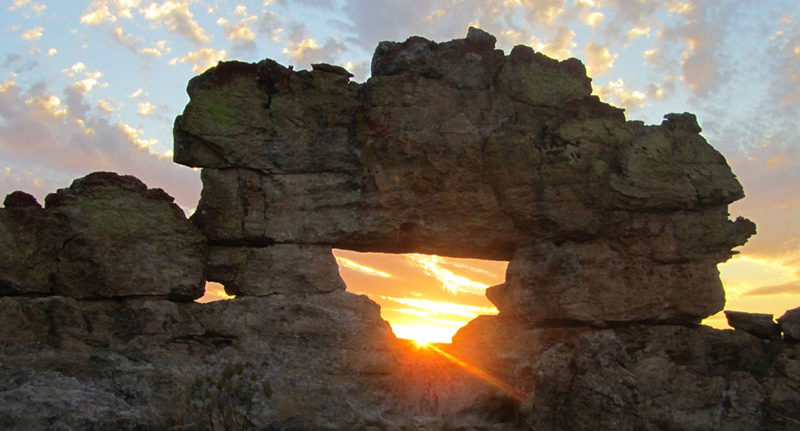🌄 Madagascar Isalo National Park — The Most Visited and Fascinating Gem of Madagascar
Introduction: A Journey Into the Heart of Madagascar’s Natural Beauty
In the heart of southern Madagascar lies a truly captivating landscape — Madagascar Isalo National Park. As the most visited park on the island, Isalo enchants travelers with its rugged sandstone canyons, crystal-clear pools, and striking biodiversity.
Unlike any other region in the country, Isalo combines desert-like plains with lush valleys and hidden oases. As a result, it has become one of the top destinations for those seeking adventure, tranquility, and authentic encounters with nature.
Whether you’re a hiker, photographer, or culture enthusiast, Madagascar Isalo National Park offers an unforgettable experience where breathtaking landscapes and fascinating traditions intertwine.
H2: Why Madagascar Isalo National Park Is So Special
H3: A Natural Masterpiece Shaped by Time
Over millions of years, wind and water have carved the Isalo Massif into an incredible geological wonder. Towering sandstone cliffs rise dramatically above dry savannas, while deep gorges and cool streams reveal the park’s hidden beauty.
Unlike the dense rainforests of the east, Madagascar Isalo National Park lies within a semi-arid region. This contrast makes the park truly unique, offering a blend of desert landscapes and green oases that surprise every visitor. Moreover, the constantly changing light on the rocks adds to the park’s charm, especially during sunrise and sunset.
Because of its grandeur and diversity, Isalo is often referred to as Madagascar’s Grand Canyon.
H3: A Harmony of Nature and Culture
Beyond its visual beauty, the park holds deep cultural meaning. The Bara people, who inhabit the surrounding region, consider the Isalo cliffs sacred. Their ancestral tombs, carved high into the rocks, serve as eternal resting places and symbols of spiritual connection.
Therefore, a visit to Isalo is not just about exploring nature — it’s also an opportunity to appreciate Madagascar’s living cultural heritage.
H2: Location — Where to Find This Natural Wonder
Situated in the Ihorombe region, about 700 km south of Antananarivo, the Madagascar Isalo National Park is easy to reach and perfectly positioned along the popular RN7 highway. The nearby town of Ranohira acts as the main gateway and offers accommodation, restaurants, and guide services.
H3: How to Get There
-
By Road: The RN7 highway connects Antananarivo to Tulear, passing through scenic towns such as Antsirabe and Fianarantsoa. Although the drive takes around 10–12 hours, it provides an incredible overview of Madagascar’s landscapes.
-
By Air: You can also fly to Tulear and continue by car to Ranohira, which takes about four hours.
-
By Tour Package: Many tour operators include Isalo in their southern Madagascar itineraries, making it a convenient and rewarding stop.
Because the park lies directly on Madagascar’s main tourist route, accessibility is one of its strongest advantages.
H2: When Is the Best Time to Visit Madagascar Isalo National Park?
The park can be visited year-round; however, the experience changes dramatically with the seasons.
H3: The Dry Season (April–October)
The dry season is the best time to explore Isalo. During this period, trails are in excellent condition, skies are clear, and the climate is pleasant for hiking. Moreover, lemurs are more active, and the golden light enhances photography opportunities.
H3: The Rainy Season (November–March)
On the other hand, the wet season brings rain and lush greenery. While some trails can be slippery, waterfalls flow more strongly, and the park looks even more vibrant. Therefore, travelers seeking solitude and vivid landscapes may prefer this time of year.
H3: Summary of Ideal Months
-
April–June: Post-rainy season freshness; ideal for photography.
-
July–September: Cool, dry, and perfect for long hikes.
-
October–November: Warm and less crowded.
-
December–March: Wet but vividly green.
H2: Entrance, Guides, and Regulations
To protect its fragile ecosystem, Madagascar Isalo National Park requires all visitors to hire an official guide. In addition, entrance fees contribute to conservation and local community projects.
-
Entrance Fee: About 65,000 Ariary per person.
-
Guide Fee: Around 80,000–150,000 Ariary, depending on the trail and duration.
-
Opening Hours: 6:00 AM – 5:00 PM daily.
Because guides know the terrain and wildlife intimately, their insights greatly enrich your visit. Furthermore, their stories about Bara traditions and medicinal plants add a personal dimension to the experience.
H2: Where to Stay — From Lodges to Campsites
H3: Ranohira, the Park’s Gateway
Ranohira offers a range of accommodation for every budget. Most lodges blend harmoniously with the surrounding rocks, providing panoramic views and a relaxing atmosphere after a long day of hiking.
Popular options include:
-
Isalo Rock Lodge: Modern comfort with stunning mountain views.
-
Relais de la Reine: Perfect for nature lovers seeking serenity.
-
Le Jardin du Roy: A luxury retreat built from natural stone, offering horse riding and spa facilities.
For adventurers, camping inside the park is also possible. However, permits are required, and facilities are basic. Still, spending a night under Madagascar’s star-filled sky is an unforgettable experience.
H2: Top Things to Do in Madagascar Isalo National Park
H3: 1. Hike Through the Spectacular Canyons
Hiking is undoubtedly the main attraction in Isalo. Trails lead through magnificent gorges such as the Canyon des Makisand Canyon des Rats, where the contrast between dry plateaus and lush valleys is striking.
As you walk, you might spot ring-tailed lemurs resting in the shade or hear the distant call of birds echoing off the canyon walls. Because of its scenic diversity, each trail feels like a new discovery.
H3: 2. Swim in the Natural Pool
After hours of hiking, few experiences are as refreshing as diving into the Piscine Naturelle. Surrounded by palm trees and turquoise water, this natural pool offers the perfect spot to cool off. Moreover, it’s one of the park’s most photographed locations.
H3: 3. Visit the Waterfall of the Nymphs
Deep within the park hides the Waterfall of the Nymphs, a tranquil place where water cascades into a crystal-clear pool. According to local legend, forest spirits or “nymphs” protect this sacred site. Consequently, many travelers describe it as a magical stop on their Isalo journey.
H3: 4. Watch the Sunset at the Window of Isalo
In the late afternoon, make your way to the Fenêtre d’Isalo (Window of Isalo). As the sun sinks behind the horizon, it lights the rocks in golden and orange hues. Therefore, this spot has become the ultimate symbol of Madagascar’s wild beauty — and the perfect finale to any day in the park.
H3: 5. Observe Wildlife and Endemic Plants
While Isalo is primarily known for its landscapes, its wildlife is equally fascinating.
-
Lemurs: 14 species, including ring-tailed lemurs and sifakas.
-
Birds: More than 80 recorded species, such as Benson’s rock-thrush and Madagascar kestrel.
-
Reptiles: Chameleons, snakes, and colorful geckos thrive here.
-
Flora: Endemic species like Aloe isaloensis and Pachypodium rosulatum flourish among the rocks.
Because of the park’s microclimates, each area supports different life forms — from desert succulents to lush canyon forests.
H2: Best Hiking Circuits in Madagascar Isalo National Park
H3: Short Trail (Half-Day Circuit)
Ideal for beginners or tight schedules, this 3–4-hour route includes the Natural Pool and scenic viewpoints. It’s easy to follow and perfect for a quick yet satisfying adventure.
H3: Canyon Circuit (Full-Day)
This 6–7-hour hike explores both Canyon des Makis and Canyon des Rats. The terrain is varied, sometimes challenging, but absolutely rewarding. As a result, it’s a favorite among serious hikers.
H3: Namaza Circuit (2 Days)
For a deeper immersion, this longer trek includes the Waterfall of the Nymphs, the Blue and Black Pools, and optional camping in the canyon. Therefore, it’s ideal for travelers who want to fully experience Isalo’s contrasts between dry plateaus and lush valleys.
H2: Suggested Itinerary for Visiting Isalo
H3: One-Day Visit
-
Morning: Explore the Natural Pool trail.
-
Afternoon: Watch the sunset at the Window of Isalo.
H3: Two-Day Adventure
-
Day 1: Full-day hike through canyons and pools.
-
Day 2: Visit the Waterfall of the Nymphs and relax in Ranohira.
H3: Three-Day Exploration
-
Day 1: Arrival and sunset viewpoint.
-
Day 2: Long canyon circuit with a picnic.
-
Day 3: Cultural visit to Bara villages before departure.
This gradual plan allows you to experience both the natural and cultural sides of the park without feeling rushed.
H2: Travel Tips for a Smooth Experience
H3: What to Bring
Because of the park’s climate, preparation is key. Bring:
-
Comfortable hiking shoes and breathable clothing
-
Sun hat, sunglasses, and sunscreen
-
Plenty of water (2 liters minimum per person)
-
Swimsuit for natural pools
-
Camera, binoculars, and insect repellent
H3: Responsible Tourism Practices
When exploring Isalo, always stay on marked trails and follow your guide’s advice. Moreover, avoid touching or feeding wildlife. Use refillable bottles and biodegradable soap to reduce waste.
Supporting local guides, buying crafts, and choosing eco-lodges are excellent ways to give back to the community.
H2: Cultural Heritage — The Sacred Spirit of Isalo
For the Bara people, Isalo’s cliffs are more than geological wonders — they are sacred. Tombs carved into rock faces preserve the memory of ancestors, reflecting a deep respect for life and nature.
Because of this spiritual connection, visitors are asked to behave respectfully near sacred areas. Understanding these customs makes your experience far richer and more meaningful.
H2: Why Madagascar Isalo National Park Is the Island’s Most Visited
H3: Accessibility and Diversity
Because Isalo lies along the main tourist route, it’s easy to reach and well-organized. Moreover, it offers a variety of experiences — from challenging hikes to relaxing swims — all within a single destination.
H3: Unmatched Visual Beauty
The interplay of colors at sunrise and sunset creates unforgettable views. Combined with the park’s diverse terrain, it’s no surprise that photographers, filmmakers, and nature lovers are drawn here year after year.
H3: Cultural Depth and Emotional Impact
Few places combine geological wonders, living culture, and wildlife as harmoniously as Madagascar Isalo National Park. For this reason, it continues to capture the hearts of both local and international travelers.
H2: Conservation and Sustainable Tourism
Madagascar faces challenges in protecting its ecosystems. Nevertheless, Isalo National Park stands as a success story in community-based conservation. Park fees directly fund habitat restoration and local employment.
By traveling responsibly, visitors become part of this positive cycle — helping to preserve the environment while empowering the people who protect it.
H2: Final Thoughts — The Timeless Magic of Isalo
Ultimately, Madagascar Isalo National Park is more than just a stop on a travel itinerary — it’s a place where nature, culture, and time converge. From the serenity of its natural pools to the grandeur of its sandstone cliffs, every corner tells a story.
As you hike its trails, swim beneath waterfalls, or watch the sun fade behind the Window of Isalo, you’ll feel a deep connection to Madagascar’s soul.
For this reason, visiting Isalo isn’t simply a journey — it’s a discovery of one of the most fascinating landscapes in Africa.
For more information about madagascar or about travel in madagascar, do not hesitate to contact us
Luxury Madagascar with the best luxury African safari tours packages. Discover your next perfect destination with HT Agency Tours

